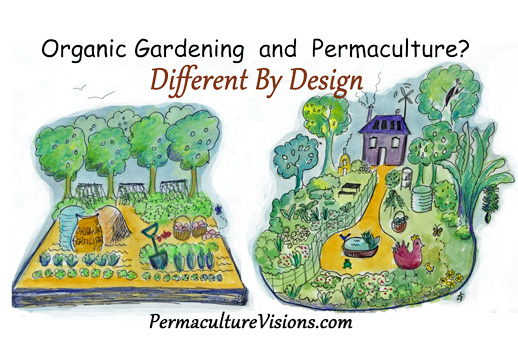As sustainable agriculture and green lifestyles become part of the mainstream conversation, the ideals and concepts of a largely underground social movement have been highly influential: permaculture.
What is permaculture?
Bill Mollison, a professor of biogeography and environmental psychology at the University of Tasmania, first coined the term in 1978 and defined it as follows:
“The conscious design and maintenance of agriculturally productive systems which have the diversity, stability, and resilience of natural ecosystems. It is the harmonious integration of the landscape with people providing their food, energy, shelter and other material and non-material needs in a sustainable way.”
In other words, permaculture is a holistic and sustainable worldview, as well as a technical approach.
The word “permaculture” was intended as a contraction of the words “permanent” and “agriculture.” The root word “permanent” is used to refer to sustainability. Today, permaculture has been expanded to include the meaning of “culture.” Practitioners are known as permaculturists or permies.

What are the principles of permaculture?
Bill Mollison and his graduate student, David Holmgren, developed the principles and practices that are now taught around the world in the Permaculture Design Course, typically a two-week immersive experience held on a permaculture farm or property.
Five of the more well-known principles are closed-loop systems, perennial crops, multiple functions, eco-earthworks, and letting nature do the work for you.
Closed-Loop Systems
Any system that provides for its own needs is inherently sustainable. This concept can include things like biofuels and solar power to what permaculturists call “inputs,” like food and fertilizer.
For example, rather than bringing in fertilizer to a farm or garden from elsewhere, a system could serve its fertility needs from livestock manure or cover crops. Livestock could be fed from grain and forage crops on the land, as well as vegetable and food scraps usually disposed of during meal prep.
Permaculturists like to talk about how a successful closed-loop system “turns waste into resources” and “problems into solutions.” Bill Mollison was fond of saying, “You don’t have a snail problem. You have a duck deficiency.”
Perennial Crops
Tilling the ground once or twice a year isn’t particularly good for the soil. Perennial crops that are planted just once are a better choice than annual crops that require constant tillage.
Agroforestry (the cultivation of edible tree crops and understory plants) is emphasized in permaculture. An example of this is shade-grown coffee or cacao plantations in South America. One challenge to this method is that most of us eat only a few perennial crops. However, if we could replace all the monoculture crops in the world (corn, soy, and wheat) with agroforestry systems, agriculture would be much more sustainable.
Multiple Functions
One of the more unique ideas of permaculture is that every component of a structure or landscape should perform more than one function. An integrated, self-sufficient system can be achieved through strategic design and placement of components. Permies call this “stacking functions.”
For example, if you need a fence to contain animals, you could make it work as a windbreak, a trellis, and a reflective surface to direct extra heat and light to nearby plants.
Another example: a rain barrel could be used to collect water, as well as raise aquatic food plants and edible fish.

Eco-Earthworks
Water conservation is a major focus on permaculture farms and gardens. The earth is often carefully sculpted to use every last drop of rain for a useful purpose. This may take several forms:
-
terraces on steep land
-
swales on moderately sloped land (broad, shallow ditches that capture runoff and allow it to soak into the ground around plantings)
-
systems of canals and planting berms on low swampy ground
This last method is modelled on the chinampas of the ancient Aztecs, a way of growing food, fish, and other crops in an integrated system. Permaculturists often talk about this approach as the most productive and sustainable form of agriculture ever created.

 Facebook
Facebook
 X
X
 Pinterest
Pinterest
 Copy Link
Copy Link

